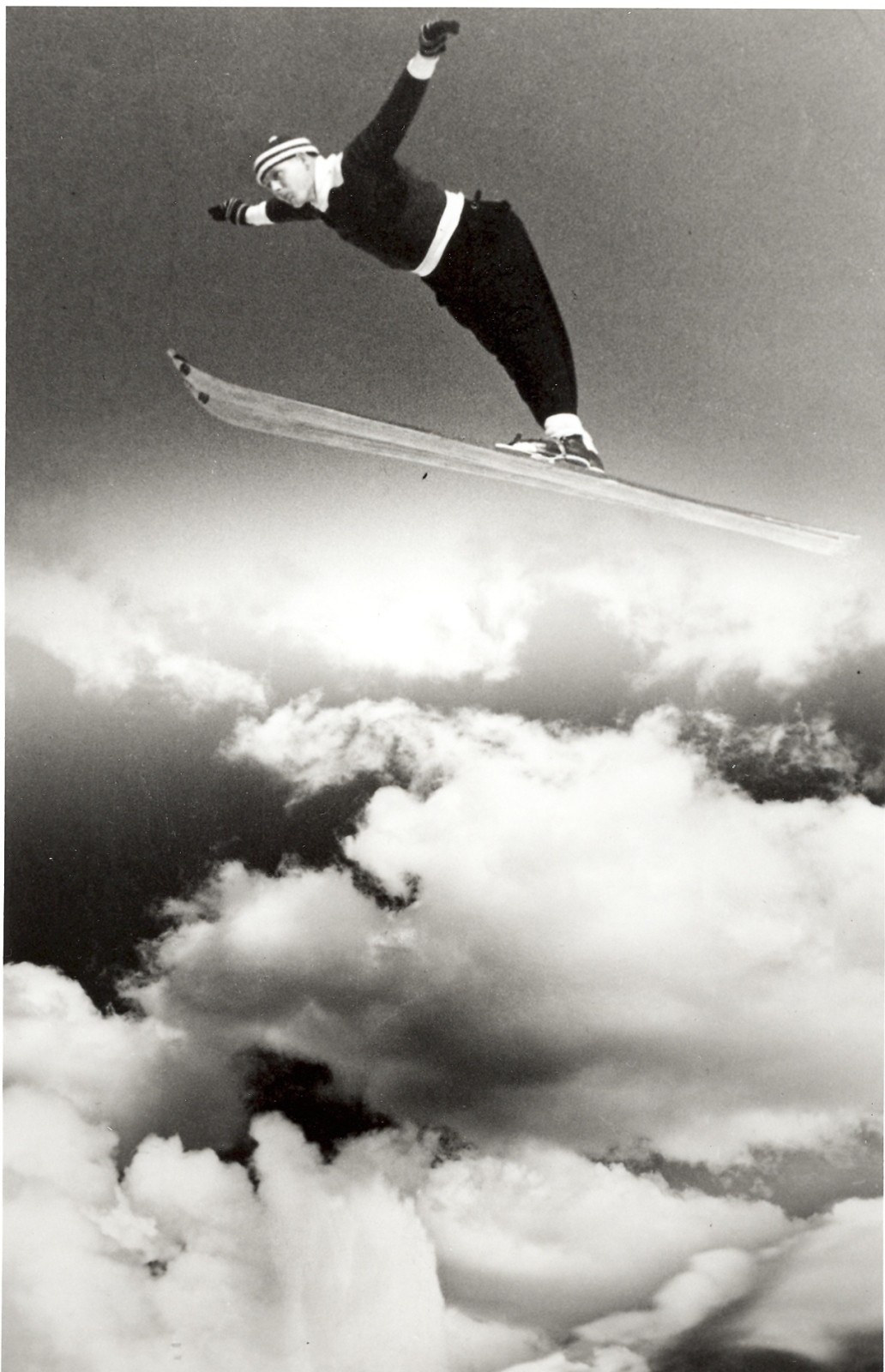Alf Engen, Wheaties and the 1936 Winter Olympics

By Yeti \ January 25 2018
The 2018 Pyeong Chang 2018 Olympic Games are knocking, but first, let's take a look back at how Wheaties, the Breakfast of Champions, kept champion ski jumper Alf Engen from competing in the 1936 Winter Olympics.
Legendary extreme athlete Alf Engen, known as the greatest all-around skier ever, was a champion soccer player, skier and ski jumper. He set ski jumping world records. He helped design more than 30 ski areas in the western United States. He pioneered deep powder skiing techniques, and he's fondly remembered for his Alta Ski School.

But world champion Alf Engen was banned from competing in the 1936 Olympics because of a Wheaties cereal box.
It was just the fourth time that countries faced off against each other in wintertime Olympics. Competition included just four sports: bobsleigh, ice hockey, skating, and skiing. Twenty-eight countries sent their best athletes to the IV Olympic Winter Games.
As background, Engen came from Norway to the United States in the 1920s and he played professional soccer. By the 1930s, he was acclaimed for his ski jumping feats, he joined a ski jumping team, and he soon won 16 national ski jumping titles. Many of his jumps set world records. He also won national titles in all four ski disciplines: ski jumping, cross country, downhill and slalom skiing.

Also in the 1930s, radio was the mass media communication method of the era. There was no television. People used their imaginations to create pictures from the words they heard.
But another form of mass media was taking hold: cereal boxes. Food manufacturers had just invented cereal that could be eaten right from the box, but they faced a marketing dilemma. How could they convince families to switch from traditionally cooked cereal to this newfangled ready-to-eat cereal? A cereal box sitting on the breakfast table with pictures of all-star athletes would be the marketing device. And unlike radio, the images were right there on the box.
Four athletes appeared on the Wheaties box -- Bob Kessler, basketball star; Mike Karakas, a champion hockey player with the Chicago Blackhawks; Kit Klein, women's speed skating champion; and famed skier Alf Engen.

Meanwhile, Engen became an American citizen. In 1935, he out-jumped everyone at the U. S. Olympic Ski Jumping Finals held at classic Ecker Hill. He was immediately named as a member of the U.S. Winter Olympic Ski Jumping Team which would compete in the 1936 Winter Games in Garmisch-Partenkirchen, Germany.
But just before he was scheduled to leave, Avery Brundage, president of the International Olympic Committee and a zealous supporter of amateurism, ousted Engen from the team because his picture had appeared on the Wheaties box. He declared that Engen's image on the cereal box made him a professional, not an amateur athlete.
Olympic rules have changed radically in the 82 years between those 4th Winter Olympics (IV) in 1936 -- and this year's 23rd Winter Olympics (XXIII).
"Engen said he didn't remember getting any money from the cereal company, 'Just a lot of Wheaties. I think I gave everyone in Salt Lake City free Wheaties.'"
I think I gave everyone in Salt Lake City free Wheaties
Ironically, shortly after the Olympics, Engen jumped against—and he beat—both the gold and silver medalists from the Olympic Games—Norwegian gold medalist Birger Ruud and Swedish silver medalist Sven Eriksson.

The remarkable skiing Engen family is the only family to have four family member in the U.S. Ski and Snowboard Hall of Fame: Alf, his two brothers Sverre and Corey, and his son Alan.
Alan lives on in his father's tradition. He's a champion skier and athlete as well as an accomplished scholar, author, and historian. He carries on the Engen tradition of serving the skiing community.
He dreamed of displaying hundreds of Alf’s ski trophies and memorabilia for the public. The dream grew into the $10.5 million Alf Engen Ski Museum at the Utah Olympic Park in Park City. Visitors can also learn about avalanches, sit in a real bobsled, try their knack at interactive ski jumping, and more. The museum was funded entirely by private donations, including donations from Utah’s famed and philanthropic Quinney and Eccles families. Visit and enjoy the museum.

Harriet Wallis has been a ski writer, editor and photographer forever. She learned to ski on a dare when she was in her mid 30s and has been blabbing about it ever since. Read more from Harriet at Senior Skiing http://www.seniorsskiing.com/
More From Yeti
More From Locals' Knowledge
Get On The List
(This information will not be shared)
-
Plan Your Trip
Plan Your Trip
- Trip Planner | Our Suggestions
- Lodging
- Ski Resorts
- Outdoor Shops & Gear
- Activities
- Reservation Experts
- Ski School
- Food + Drink
- Transportation
- Utah Events
- Trail Maps
- The Ultimate - Family Guide
- The Ultimate - Guide For Groups
- The Ultimate - Powderhound Guide
- Why Utah Snow?
- Videos
- Blog
- Compare Resorts
-
Resorts & Snow
Resorts & Snow
- Snow Report
- Resort Comparison
- Alta
- Beaver Mountain
- Brian Head
- Brighton
- Cherry Peak
- Deer Valley
- Eagle Point
- Nordic Valley
- Park City
- Powder Mountain
- Snowbasin
- Snowbird
- Solitude
- Sundance
- Woodward Park City
- Cross Country - Nordic Locations
- Snow Report
- Mobile App & TV Display
- Powder Alert + Snow Report Email
- Web Cams
- Why Utah Snow?
- Printable Snow Report
- All Trail Maps
- Blog
- Deals Deals
- Passes Passes
- Explore Explore









comments
Leave Your Comment